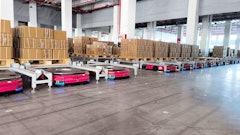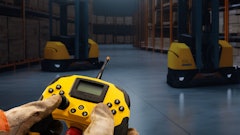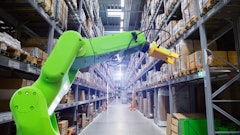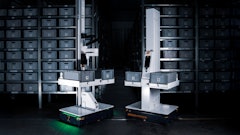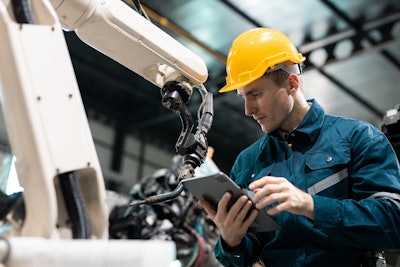
In today’s rapidly evolving supply chain, companies are often presented with what seems like an “either-or” situation: embrace and deploy technology or keep using human employees. This framing, however, is misleading and often shortsighted. Progress is not purely technological. The idea that companies must choose one over the other not only oversimplifies the issue, but it also overlooks the real strategic opportunity—having a balanced, integrated approach.
Differentiating technology from innovation
To successfully embrace this hybrid future where technology and humans work together to enhance supply chain efficiency and performance, it is important first to understand the difference between “technology” and “innovation.” While the two concepts are closely related, they are not the same; failing to distinguish between them could lead to flawed decision-making when deploying technology in the supply chain.
Technology is a tool, while innovation is a mindset. Understanding this distinction will help you focus not just on adopting technology, but on integrating it meaningfully into your supply chain operations. Innovation stems from designing workflows that leverage machines to enhance human performance and experience, where new tools unlock creativity, and change is driven by human insight, not just technology.
Not all new technology will automatically add value. You can invest in the latest automation technology; however, if it does not improve performance, increase efficiency, or solve the issue for which it was purchased, it is not providing value to your bottom line.
The value comes from innovative thinking that determines where and how the automation can be best used in your supply chain. It comes from ensuring the right processes and workflows are in place for it to succeed. It also stems from the understanding that technology does not have to replace workers completely but can instead strategically augment human capabilities. And finally, the value comes from recognizing that any displaced workers may be able to provide value in other areas of your supply chain.
So, what might this look like in practice? Here are four examples:
1. Quality control. While technology, such as generative AI, can perform some quality checks, it is not quite advanced enough to always detect subtle defects or nuances. The value lies in understanding that human inspectors may still be required to more accurately detect minor damage and nuanced flaws, such as slightly crushed packaging, improperly sealed cartons, mislabeled inventory, or subtle signs of water damage on pallets.
2. Item picking. In a facility where workers walk long distances and push heavy carts for item picking, it might make more sense to deploy assisted picking robots. By having robots navigate autonomously within the warehouse to locate and transport picked items to workers quickly, it creates a more efficient and comfortable work environment for employees.
3. Truck trailer unloading. Unloading boxes from truck trailers is a strenuous, physically demanding work process. There’s a lot of lifting and twisting involved for employees. By automating this process with mobile robots, you remove strenuous activity and redirect skilled labor to focus on value-added, strategic tasks in other parts of the warehouse.
4. Pallet movement. Deploying autonomous forklifts for double-deep pallet put away and retrieval can increase efficiency, accuracy and safety of the repetitive task. To realize the full potential of the technology, a new process for how the pallets flowed in the warehouse needed to be designed. Displaced manual forklift operators are transitioned to either managing the automated system or other tasks in the warehouse that require a skillset or human judgement.
Investing in people and technology
Companies that invest in both people and technology are more adaptable because they can combine the efficiency of machines with the emotional intelligence of humans. They’re more inclusive because they create roles that are less likely to become obsolete and instead evolve with technology. And they’re more innovative because they treat technology not as a replacement, but as an enabler for human employees. This balanced, integrated approach helps ensure companies retain the skilled workforce they need.
It also helps ensure you have the flexibility you need to meet changing consumer demands. For instance, if you are using assisted picking robots as part of the item picking process, you can often swiftly add more robots as demand increases. In this way, it is not about eliminating workers. It is instead about reducing the number of short-term positions that need to be filled during peak periods, as well as eliminating the time required to train those short-term workers.
Ultimately, this balanced approach helps create a comfortable working environment for warehouse workers that utilizes innovative technologies and is designed to enhance productivity and well-being. This can be a powerful retention and recruiting tool, especially in a tight labor market.
When taking this balanced approach, change management can help enable success. Even the most advanced systems could fall short if the people expected to use them aren’t prepared or engaged. Successfully deploying technology, such as automation, in supply chain operations requires thoughtful change management strategy that prepares, supports and empowers employees throughout the transition. When employees feel involved and empowered, adoption rates improve, resistance decreases, and the organization is better positioned to unlock the full value of its technological investments.
Achieving the right balance with technology deployment
To achieve a culture of continuous innovation, utilize a proven process to assess and integrate leading-edge technologies, ensuring they bring value to customers and enhance operations. As a result, these deployments are ideal examples of how companies can achieve a balanced, integrated approach that blends the best attributes of technology and employees.
Here are 10 tips for maximizing the value of your technology deployment and ensuring a balanced, integrated approach.
1. Adopt a mindset that separates technology and innovation and recognize that innovation is what ensures the technology provides value and helps achieve your operational objectives.
2. Identify what you want to accomplish with the technology, focusing on operational challenges you are trying to overcome, objectives you want to achieve, and the team and infrastructure you need to proceed.
3. Do your research and assess your options so you can adequately determine the right strategic approach to take and the right technology to deploy.
4. Consider the workforce and determine where employees might be supported or even relieved of non-value tasks so they can focus on more strategic and value-adding tasks that enhance operational performance.
5. Work closely with your technology provider to benefit from their knowledge of the technology, deployment experience, and expertise gained from working with a variety of companies on similar installations.
6. Know your operations and how your equipment and people are being used so you can identify tasks that are ideal candidates for new technology, as well as areas where any displaced employees may be deployed.
7. Create a plan for deployment that prioritizes transparent employee communication and upskills your workforce to the new technology. Include processes for addressing employee questions, concerns, or feedback. In addition to training employees on how to use the technology, ensure they understand why the new technology is important to the business. Transparent communication is key to employee acceptance.
8. Be prepared to make changes to established processes and workflows, either by modifying existing ones or adding new ones, to ensure the technology is seamlessly integrated to add value.
9. Determine the metrics and data you will use to measure success of the installation and performance of the technology, while also having a plan to share that information internally and adjust as needed.
10. Have a plan to expand beyond the initial successful installation to strategically grow and evolve your efforts, either in another facility or with a different use case.
In the end, it’s not about choosing between humans or technologies. It’s about designing systems and creating collaborations where each amplifies the other’s strengths. It is about redesigning roles, retraining staff, and rethinking processes to maximize the benefits of both human and technological capabilities, thereby enhancing the performance, efficiency, and resiliency of your supply chain.


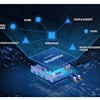


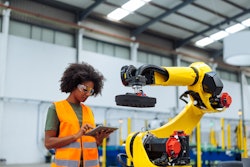
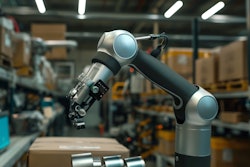


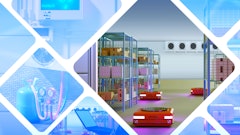
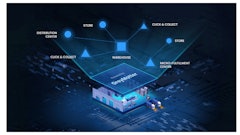
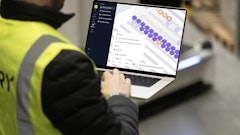
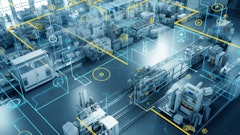
![Pros To Know 2026 [color]](https://img.sdcexec.com/mindful/acbm/workspaces/default/uploads/2025/08/prostoknow-2026-color.mduFvhpgMk.png?ar=16%3A9&auto=format%2Ccompress&bg=fff&fill-color=fff&fit=fill&h=135&q=70&w=240)
